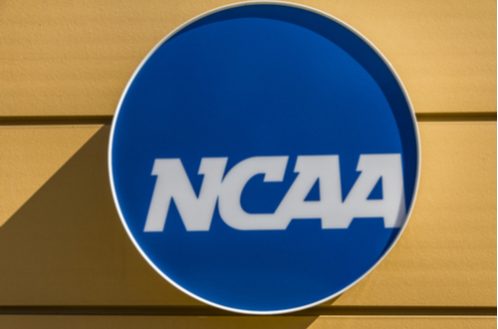
The NCAA, in collaboration with power conferences, has taken a groundbreaking step towards reshaping college athletics with the filing of a comprehensive long-form agreement to settle three major antitrust lawsuits. This agreement, submitted on Friday, addresses athlete revenue sharing, expands scholarships to full rosters, and establishes a historic enforcement system of arbitration overseen by the courts. These changes are set to take effect at the beginning of the 2025-26 academic year.
The lawsuits, brought forward by thousands of athletes represented by plaintiff attorneys, targeted issues surrounding athlete compensation. In a separate filing on Friday, attorneys detailed their plan to distribute nearly $2.8 billion in back damages to former players over the next decade.
According to documents obtained by Yahoo Sports, 83% of the back pay, amounting to $2.3 billion, will be allocated to approximately 19,000 football and men’s basketball players, many of whom hail from power conferences. This distribution translates to an average of about $120,000 per player over ten years, or $12,000 annually. This back-damages formula may influence how schools manage revenue distribution in the future. The initial back payments are expected this coming spring, pending approval of the settlement by Judge Claudia Wilken of the U.S. District Court of Northern California.
Related: Houston Christian University Denied Motion to Intervene in NCAA Antitrust Case
Friday’s filings represent a significant milestone in the settlement approval process, which attorneys predict could extend into early next year. The defendants’ long-form filing, encompassing over 100 pages, is notable for its detailed injunctive relief agreement. This 31-page document outlines the revenue-sharing pool and cap, new roster limits for sports, and an unprecedented enforcement mechanism.
While the NCAA and the conferences retain considerable authority, the settlement assigns a significant oversight role to the court and the plaintiff attorneys, including Jeffrey Kessler and Steve Berman. They will manage various aspects of the new model, such as the operation and enforcement of college sports’ quasi-salary cap.
A court-appointed “special master” will resolve compliance and interpretation disputes regarding the revenue-sharing model, a role currently filled by the NCAA office. Additionally, a “neutral arbiter” will hear and rule on appeals from athletes or schools found in violation of the new model’s rules, replacing the NCAA infractions entity’s current role.
Plaintiff attorneys and their class of athletes, with new freshman classes being added to the settlement each year, will help develop and monitor the enforcement process of the new salary cap over the agreement’s decade-long duration.
The filing also introduced new information and specifics on various concepts, particularly an enforcement and arbitration system to regulate third-party NIL entities, such as collectives, and the increasing pool of revenue that schools can share with athletes.
Source: Sports Yahoo
Featured News
Big Tech Braces for Potential Changes Under a Second Trump Presidency
Nov 6, 2024 by
CPI
Trump’s Potential Shift in US Antitrust Policy Raises Questions for Big Tech and Mergers
Nov 6, 2024 by
CPI
EU Set to Fine Apple in First Major Enforcement of Digital Markets Act
Nov 5, 2024 by
CPI
Six Indicted in Federal Bid-Rigging Schemes Involving Government IT Contracts
Nov 5, 2024 by
CPI
Ireland Secures First €3 Billion Apple Tax Payment, Boosting Exchequer Funds
Nov 5, 2024 by
CPI
Antitrust Mix by CPI
Antitrust Chronicle® – Remedies Revisited
Oct 30, 2024 by
CPI
Fixing the Fix: Updating Policy on Merger Remedies
Oct 30, 2024 by
CPI
Methodology Matters: The 2017 FTC Remedies Study
Oct 30, 2024 by
CPI
U.S. v. AT&T: Five Lessons for Vertical Merger Enforcement
Oct 30, 2024 by
CPI
The Search for Antitrust Remedies in Tech Leads Beyond Antitrust
Oct 30, 2024 by
CPI